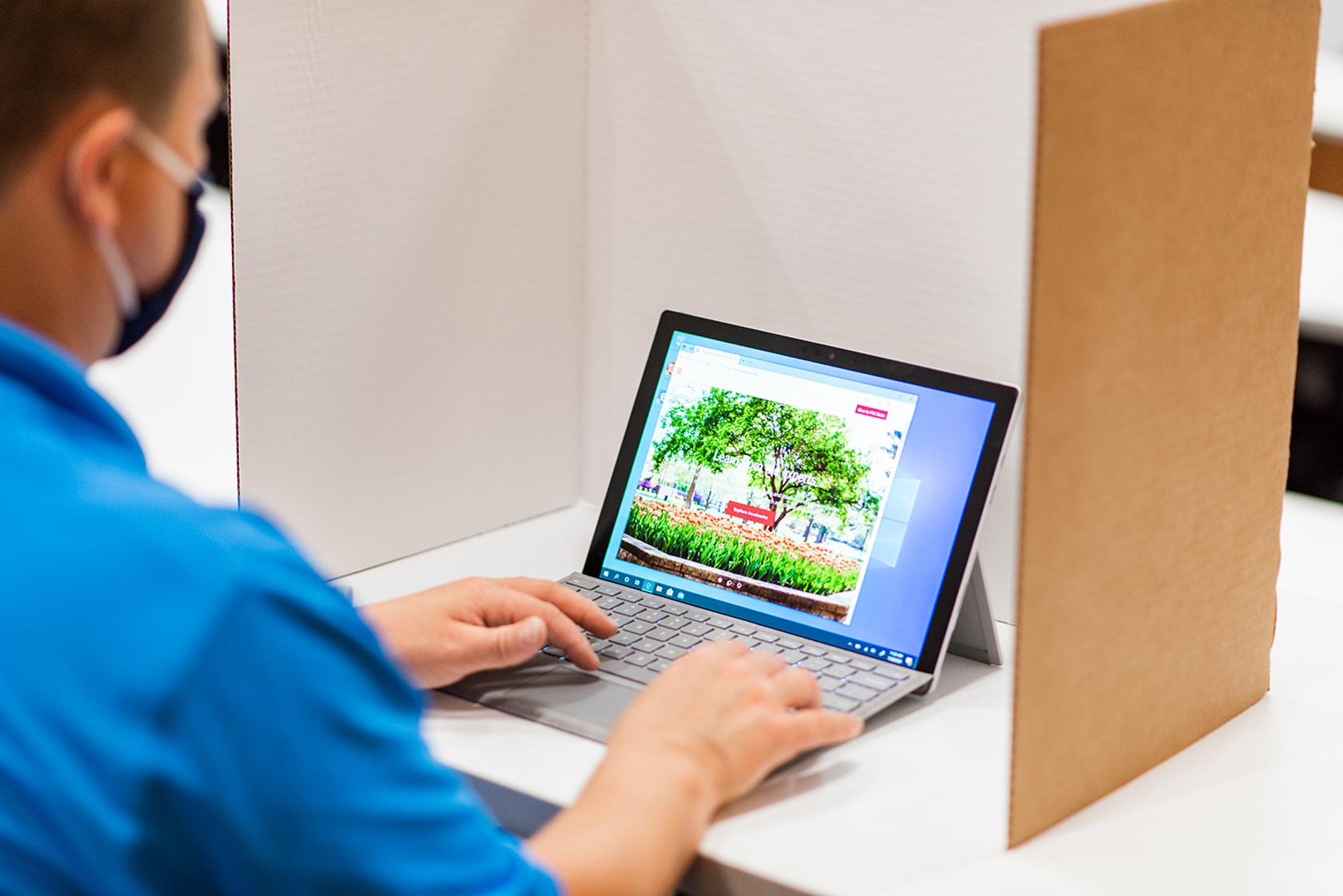Moving forward: College of Arts and Sciences working through complexities to prepare for fall semester
Tuesday, July 28, 2020 12:30 PM
News, Academics
Pittsburg, KS

Editor's Note: This is part of a series of stories that is exploring the ways in which Pittsburg State University, the community's largest employer and education provider, has been preparing all summer for the fall semester in an effort to be as safe as possible during the COVID-19 pandemic. Stories focusing on specific aspects of campus life, including academics in each of the university’s four colleges, recreation, student health, and more.
Q. How is the largest college at Pittsburg State University working this summer to ensure students and faculty are able to complete coursework amidst the COVID-19 pandemic when school resumes this fall?
A. College of Arts and Sciences Dean Mary Carol Pomatto says decisions and strategies have been based on "a considerable amount of input from students, from faculty, from people sharing research and findings from other universities.”
“We also have to consider regulatory agencies for some of our programs, including social work and secondary education as two examples,” she said. “It’s been challenging, but at the same time, I’ve been totally impressed by the collaboration at all levels of our university and by community agencies and individuals.”
The guiding principle is to continue to provide students with transformative experiences including hands-on learning, research, and unique learning opportunities while keeping students, faculty, staff, community partners and visitors safe.
The College of Arts & Sciences is comprised of 11 departments and one school spread among 10 buildings and includes some 600 to 700 fall course offerings. The college is home to the university's only doctoral program. The academic units in the college include: Art; Communication; English and Modern Languages; Biology; Chemistry; Physics; Math; Family and Consumer Sciences; Music; Military Science; History, Philosophy and Social Sciences; and, the Irene Ransom Bradley School of Nursing.
The college accounts for the majority of course offerings in the general education package and produces the largest number of credit hours among the four colleges.
Students learn in numerous environments: in classrooms, labs, testing centers, the Early Childhood Learning Center and Preschool, the Health Simulation Center, clinical settings, on and off campus practicum settings, school systems, fields/streams and a host of others, Pomatto noted.
“That increases the complexity, just thinking about things like signage and traffic patterns, for example. It’s very dynamic, very fluid – we have to be flexible,” she said.
The college also includes activities in which the community engages, including Nature Reach, Pitt State Theatre, band, choir, and the Solo & Chamber Music Series.
“It’s diverse,” Pomatto said. “And because of the range of what we have to consider, a lot of our planning has been at the department level, and it’s very specific to the needs of students who are enrolled in the courses. It cannot be a one-size-fits-all approach.”
All summer, faculty, staff, students, department chairs, and directors have been working together on preparations.
Examples:
- They’ve worked closely with building custodians, the Physical Plant, and other offices, readying classrooms, gathering necessary equipment, supplies and personal protective gear such as masks, face shields, and sanitizers and even slotted masksand instrument bell coversthat will allow music students to practice and perform.
- They’ve relocated more than 50 courses, with the assistance of the Registrar’s Office, to rooms that more appropriately could accommodate the number of enrolled students and still provide social distancing.
- They’ve split some classes into two or three cohorts so that part of the students can be in the classroom and part can be accessing the class via theweb, andhave created rotation schedules.
- Many faculty are taking advantage of additional guidance and training offered through the Center for Teaching, Learning, and Technology.
- They’ve ordered plexiglass dividers for classrooms and labs where needed, have redesigned seating and in some cases have moved seats out and stored them for the semester.
- Departments are getting creative. The Music Department will hold outdoor band practices whenever possible, and Military Science will move some of their experiences outdoors.
- They’ve invested in small, portable webcams with microphones and other specialized technologies including additional laptops to replace outdated ones.
- They've migrated some classes to an online format.
- They’ve worked with outside agencies and community partners, including health care providers and school districts,to provide students internship, clinical, and practicum experiences so they can be on track to licensure.
“People care about Pittsburg State, they care about what we’re doing, they’re interested, and they want to help,” Pomatto said. “Even if it’s just offering a kind and encouraging word to keep at it.”
Beyond health and safety, she said the College of Arts and Sciences is focusing on the provision of the faculty-student relationship.
“The university experience is not just about learning in the classroom but it’s also about relationships with peers, faculty and others on our campus,” she said. “Where possible, we are taking steps to preserve those mentor and peer relationships.”
Cutline: The Irene Bradley School of Nursing, which is part of the College of Arts and Sciences, will utilize new technology and physical barriers so students can test safely.